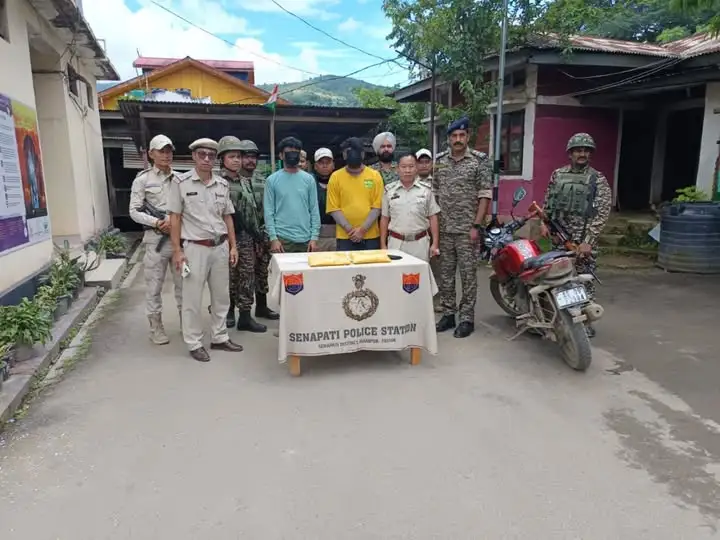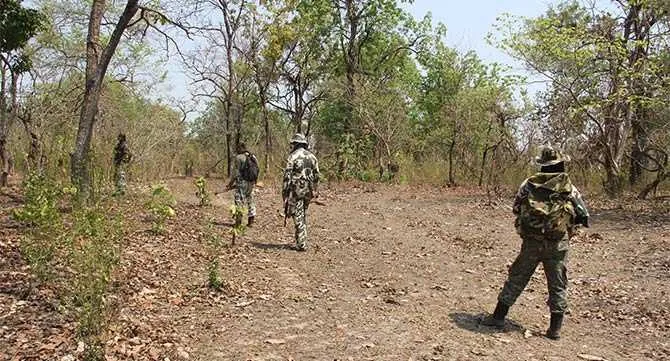Manipur: Over 314 Kg of Drugs Destroyed in Anti-Narcotics Drive
Summary of the News
Manipur authorities destroyed a massive 314.471 kilograms of drugs during a recent anti-narcotics drive, showcasing the state’s unwavering commitment to curbing drug-related activities. This operation, part of ongoing efforts to combat the drug menace, emphasizes the state government’s resolve to create a drug-free Manipur. The initiative has garnered praise for its swift action and strong message against illegal drug trafficking in the region.
Manipur’s Anti-Narcotics Drive: A Milestone in the War Against Drugs
Drug abuse and trafficking are two sides of the same coin that have plagued societies for decades. In Manipur, the state government is tackling this head-on with its recent anti-narcotics drive, where over 314 kilograms of drugs were destroyed. Let’s break it down and dive deeper into what this achievement means for Manipur and why it’s such a big deal.
The Scale of the Operation
Destroying 314 kilograms of drugs isn’t a small feat. To put it in perspective, that’s nearly the weight of four average-sized adult tigers! The destruction of such a massive haul sends a strong message that illegal drug activities won’t be tolerated in Manipur.
What Was Destroyed?
The operation involved burning seized drugs, including heroin, methamphetamine tablets, and cannabis. These substances have been a significant concern for law enforcement due to their adverse effects on society, especially the youth.
How Was It Done?
The drugs were destroyed following legal procedures, ensuring transparency and compliance with the Narcotic Drugs and Psychotropic Substances (NDPS) Act. This meticulous approach showcases the government’s commitment to maintaining ethical standards while combating the drug menace.
The Bigger Picture: Why This Matters
Manipur’s Fight Against Drugs
Manipur has long been a transit route for illegal drug trafficking, given its proximity to the infamous “Golden Triangle” (a region known for high drug production). This geographical factor has made the state a hotspot for drug-related activities. However, the government’s proactive measures are now turning the tide.
Impact on Society
Drugs don’t just harm individuals—they tear apart families and communities. By destroying such a significant quantity of drugs, the government is actively reducing their availability on the streets, protecting vulnerable populations from falling prey to addiction.
Message to Traffickers
Let’s be real: actions speak louder than words. This operation sends a clear message to drug traffickers—Manipur isn’t a safe haven for illegal activities anymore.
The Human Element: Why This Battle Is Personal
Stories of Recovery
Behind every statistic is a story. For every kilogram of drugs destroyed, countless lives are potentially saved. Imagine a young person who might have fallen into addiction but now has a chance at a better future because these substances were removed from circulation.
The Role of Communities
This isn’t just a government effort; communities play a vital role too. Local groups and NGOs have been instrumental in raising awareness about the dangers of drugs, providing rehabilitation support, and collaborating with authorities.
The Challenges of Combating Drugs in Manipur
While the recent operation is a step in the right direction, the fight against drugs is far from over. Here are some challenges that remain:
1. Geographical Proximity to the Golden Triangle
Manipur’s location near Myanmar, Laos, and Thailand makes it a prime transit point for drug trafficking. This geographical challenge requires international cooperation to effectively address the issue.
2. Limited Resources
Combating drug trafficking requires significant resources, including manpower, technology, and funding. Ensuring that law enforcement agencies have access to these resources is crucial for sustained success.
3. Socioeconomic Factors
Poverty and unemployment often push individuals into drug-related activities. Addressing these underlying issues is key to preventing people from becoming involved in the drug trade.
4. Addiction Recovery Infrastructure
While efforts to destroy drugs are commendable, equally important is providing support for those already affected by addiction. Rehabilitation centers and counseling services need to be strengthened to ensure long-term solutions.
The Role of Policy and Legislation
Laws like the NDPS Act are instrumental in curbing drug-related activities. However, effective implementation is equally important. The government must continue to strengthen its policies, improve inter-agency coordination, and collaborate with international bodies to address cross-border trafficking.
Recent Policy Efforts in Manipur
- War on Drugs Campaign: This ongoing initiative by the Manipur government aims to eradicate drug abuse and trafficking from the state.
- Community Policing: Encouraging community involvement in reporting drug-related activities has proven effective in several regions.
- Educational Campaigns: Awareness drives in schools and colleges are helping to educate the youth about the dangers of drug use.
The Road Ahead: What Needs to Be Done?
While the destruction of 314 kilograms of drugs is a significant milestone, it’s just the beginning. Here’s what needs to happen next:
1. Strengthening Border Security
Given Manipur’s strategic location, securing its borders is essential to prevent the inflow of drugs from neighboring regions.
2. Enhancing Law Enforcement
Investing in training and technology for law enforcement agencies can help them stay ahead of drug traffickers.
3. Expanding Rehabilitation Programs
Rehabilitation isn’t just about detoxification—it’s about giving people the tools they need to rebuild their lives. Expanding these programs can make a huge difference.
4. Promoting Economic Development
Creating job opportunities and addressing poverty can reduce the socioeconomic factors that drive people toward drug-related activities.
5. Fostering International Cooperation
Combating cross-border trafficking requires collaboration with neighboring countries. Strengthening these ties can help disrupt the supply chain at its source.
Why This Matters for You and Me
You might be wondering, “What does this have to do with me?” Well, the truth is, drug abuse and trafficking affect us all. Whether it’s through increased crime rates, strained healthcare systems, or broken families, the ripple effects of the drug trade are far-reaching.
By supporting initiatives like the anti-narcotics drive, we’re not just creating a safer Manipur—we’re building a better future for everyone.
Conclusion: A Step Toward a Drug-Free Manipur
The recent anti-narcotics drive is a testament to what can be achieved when determination meets action. Destroying over 314 kilograms of drugs isn’t just a win for law enforcement—it’s a win for every person who dreams of a safer, healthier Manipur.
As the state continues its fight against drugs, let’s remember that this is a collective effort. From policymakers and law enforcement to communities and individuals, everyone has a role to play in creating a drug-free society.
FAQs
1. What types of drugs were destroyed during the anti-narcotics drive?
The drive involved the destruction of heroin, methamphetamine tablets, and cannabis, among other substances.
2. Why is Manipur a hotspot for drug trafficking?
Manipur’s location near the Golden Triangle makes it a key transit point for drug trafficking.
3. How does the government ensure transparency in drug destruction operations?
The destruction is carried out following legal procedures under the NDPS Act, ensuring transparency and accountability.
4. What role do communities play in combating drug abuse?
Communities contribute by raising awareness, reporting drug-related activities, and supporting rehabilitation efforts.
5. What are the long-term goals of Manipur’s anti-drug initiatives?
The ultimate goal is to create a drug-free Manipur by addressing trafficking, reducing addiction, and promoting socioeconomic development.



